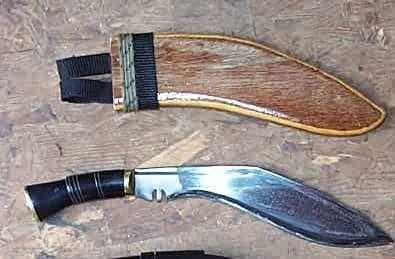

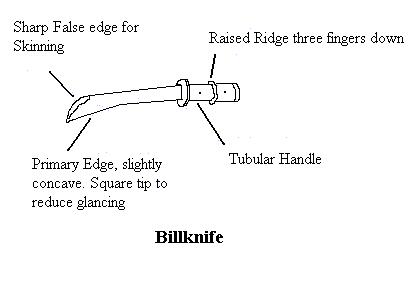
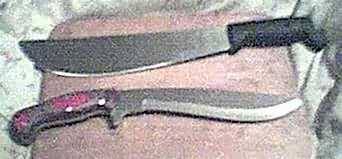
Other forms of blade may be more suited to the proposed handle type. The upper knife in the picture on the left is a 12” bladed Machete from El Salvador (marked Corneta, Imacasa, No.127). Although not a machete the knife below has a yataghan-style edge, and this may be a good design should the blade be made thinner and longer.
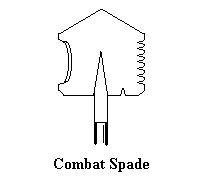

| Chinese made WQJ-308 Entrenching Tool. I particularly like the wirecutter, but the film itself is a good introduction as to how useful an entrenching tool can be. I reallly want one of these! |
By the Author of the Scrapboard : | |
|---|---|
 | Attack, Avoid, Survive: Essential Principles of Self Defence Available in Handy A5 and US Trade Formats. |
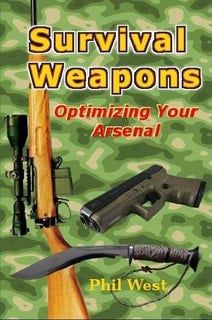 | |
 | Crash Combat Fourth Edition Epub edition Fourth Edition. |
 | |
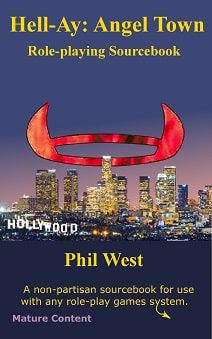 | |